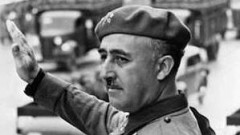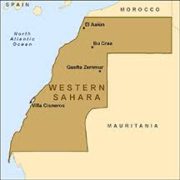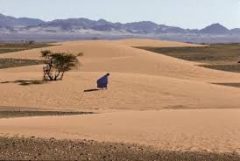One of most protracted conflicts in Africa today concerns the former Spanish colony of Spanish Sahara, situated in the northwestern corner of the continent, adjacent to Morocco, Algeria and Mauritania.
By the 20th century, Spain’s once-grand empire consisted of a few small bits and pieces, all in Africa: Ifni and the protectorate of Spanish Morocco in northern Morocco (the rest of Morocco was a French protectorate); Spanish Sahara to Morocco’s south; and Spanish Guinea, consisting of the offshore island of Fernando Po (now Bioko) and the small continental enclave of Rio Muni.
When Morocco achieved independence from France in 1956, Ifni and Spanish Morocco became part of that country. But Morocco also laid claim to Spanish Sahara (now Western Sahara), which Spain had acquired in 1884 during the so-called “scramble for Africa,” asserting that the territory was historically an integral part of the Moroccan monarchy.
The population there is of mixed Arab and Berber descent.
Beginning in 1973, a guerrilla war, led by the Polisario Front and representing the native Sahrawi tribes, had also begun to challenge Spanish control in the colony, and Spain had actually launched negotiations for a handover of power with leaders of the indigenous rebel movement.
Meanwhile, Morocco lost its case for legal control of the territory at the International Court of Justice in October 1975, and a United Nations mission to the territory found that Sahrawi support for independence was “overwhelming.”
One month later, some 350,000 Moroccans advanced several miles into the territory, escorted by 20,000 Moroccan troops, in the so-called “Green March.” It caught Spain in a moment of political crisis. In 1975, with the death of Francisco Franco, Spain was transitioning from a fascist dictatorship to a constitutional monarchy.

Madrid decided to withdraw from Spanish Sahara following renewed Moroccan demands and international pressure, mainly from UN resolutions regarding decolonization.
Spain agreed to cede the colony to Morocco and Mauritania, and the area was then split between the two. But after a disastrous four-year war with the Polisario, Mauritania withdrew from Western Sahara, and left Morocco in control of all of what it calls its Southern Provinces.
The Polisario, aided by Algeria, has continued to oppose the Moroccan occupation, which has not been recognized by the African Union or the UN.

In 1976, the guerrilla movement proclaimed the Sahrawi Arab Democratic Republic and set up a government in exile in Algeria. Since 1979, the Polisario Front has been recognized by the UN as the representative of the people of Western Sahara.
The Sahrawi Arab Democratic Republic was admitted to the African Union in 1984, prompting Morocco to withdraw from the organization.
In 1991 Morocco and the Polisario agreed to a UN -backed ceasefire, which included an agreement by Morocco to allow a referendum in Western Sahara to determine the wishes of its population.
However, the referendum has not been held because of questions over who is eligible to vote. Bloody clashes erupted between police and pro-independence protesters last month, when a UN envoy visited the territory.
As of 2013, the Sahrawi Arab Democratic Republic has been recognized by 85 states. Morocco’s claim is supported by the Arab League.

In the 1980s, Morocco built a 2,700 kilometre-long barrier to keep Polisario fighters out of the bulk of the area that lies to the north and west of it. Today, the Polisario Front controls the eastern third of the territory, but this area is almost uninhabited, while many thousands of Sahrawis languish in refugee camps in Algeria and Mauritania.
Henry Srebrnik is a professor of political science at the University of Prince Edward Island.